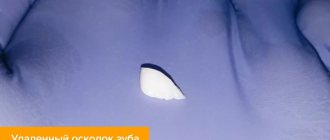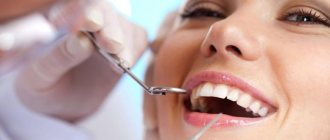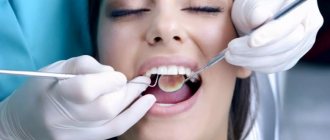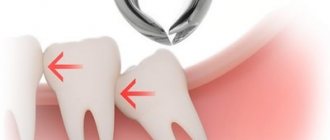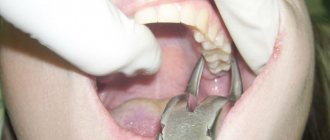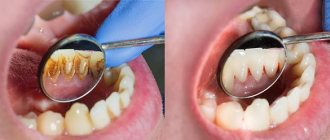What you need to know about bleeding?
Excessive bleeding after tooth extraction is usually a consequence of certain health problems. It can be:
- poor blood clotting;
- damage to nearby vessels or bones;
- inflammation in surrounding tissues;
- extensive surgical field.
In addition, this phenomenon can be caused by unqualified actions of the dentist who pulled out the tooth, or violation of his instructions by the patient himself.
In a normal situation, a blood clot that stops bleeding will form within half an hour. This even applies to surgical interventions that involve cutting the gums. In general, heavy bleeding is not a big deal, since there are many blood vessels around the tooth. However, it should stop within 30 minutes. A longer period is needed if the patient suffers from the following diseases:
- alcoholism (alcohol slows down regeneration processes);
- vascular diseases, including acute leukemia;
- hypertension;
- anemic conditions.
It is worth considering that in this case we are talking about primary bleeding, that is, when blood flows after removal. If it stops, but after some time the bleeding resumes, it is called secondary.
Many people mistake ordinary ichor for blood. To notice the difference, you should study the nature of the discharge. The color of ichor is whitish or yellowish, and that of blood is scarlet. In addition, blood is viscous. The discharge of ichor within a few hours is considered normal.
Consult a doctor URGENTLY
- severe swelling of the gums;
- spread of pain to part of the head or face;
- a large volume of secreted blood that needs to be spit out;
- feeling of general weakness;
- increasing dizziness;
- rapid increase in body temperature.
Signs of normality
It is quite normal that after you have a tooth pulled out, the wound that forms in its place begins to bleed. This is natural, because the doctor performed a surgical operation, during which he acted on living tissues penetrated by many vessels and capillaries. As a result of the injury, a physiological reaction such as bleeding occurred.
Immediately after removing the root, a hole forms in its place, which should fill with blood. The oozing blood should not be spit out; you must wait until it thickens and stops. The resulting clot is necessary for our body, as it performs a protective function and prevents infection from entering damaged tissues.
Important! Don't confuse blood with ichor. Ichor is a yellowish liquid with a slight admixture of blood, which is released from damaged tissues and promotes their healing. You may notice how saliva is stained with it within 1-3 days after extraction (removal), which is also a sign of normality.
How does a dentist stop bleeding?
If the bleeding does not stop, your dentist may do the following:
- Apply a ligature.
- Cauterize the wound surface using electrocoagulation.
- Use a hemostatic sponge, which is placed in the hole, after which cold is applied to the cheek. This gives an almost immediate effect.
- Taking drugs that increase blood clotting: vikasol, aminocaproic acid, dicinone. But the maximum effect of these funds occurs within 2-4 hours.
Important! If there is a tendency to form blood clots, as well as with diagnoses of thromboembolism and thrombophlebitis, taking medications that increase clotting is contraindicated.
If bleeding resumes a few days after tooth extraction, this may indicate the onset of inflammation. Therefore, the doctor prescribes special medications and applies a tight tamponade.
Professional assistance at the Berezka clinic
A dentist in a clinical setting stops bleeding in several ways, depending on the severity of the condition and the individual characteristics of the patient. It should be noted that each of the methods will be effective only if you seek medical help in a timely manner.
Stitching
The damaged vessel is ligated over the hole or soft tissue is sutured. The boas of the method stop bleeding with equal effectiveness.
Electrocoagulation
The manipulation is performed under local anesthesia. They resort to this procedure if several capillaries are damaged. The tissues are dissected using a special tool, after which they are soldered, facilitating rapid healing of the wound.
Application of fibrin film
A fibrin film is applied to the place where the tooth was removed. In addition to the hemostatic effect, the film also has an anti-inflammatory, disinfecting and healing effect.
Tamponation
In this case, the dentist uses iodoform turunda. It is inserted into the hole in the same way as a gauze swab, but to a greater depth.
Hemostatic tube
The method is relevant for patients suffering from high blood pressure. The tube is carefully inserted into the hole and held until the AT is brought back to normal.
You can also use gelatin and collagen sponges to stop bleeding.
The dentist makes a decision on the need for additional treatment procedures based on the results of examining the condition of the wound after extraction.
How to stop bleeding at home?
We will describe several effective methods that allow you to stop bleeding without the help of doctors:
- Using a thick swab of bandages. It must be pressed tightly onto the wound and, after soaking in blood, replaced with a new one soaked in 3% hydrogen peroxide. Only sterile bandages are suitable for this purpose. All manipulations should be carried out with clean hands, and preferably with sterile gloves.
- Decrease in blood pressure (if it has risen). To do this, you need to take special medications, for example, captopril, nifedipine or verapamil.
- Use of a hemostatic sponge. It contains human blood, which increases antiseptic properties. You need to very carefully apply it to the wound, cover it with a tampon, and then remove it when the sponge has dissolved.
- Ice pack. First you need to lie down and apply an ice pack to the outside of your cheek for 10-15 minutes. Breaks should be approximately the same length. It will take 5 repetitions. It is important not to apply anything to the gum itself!
Old sinus perforation
If the defect is not detected and eliminated in a timely manner, acute inflammation will subside. Within a month, the patient develops a fistula. It connects the gum surface and the sinus cavity. Signs of a chronic inflammatory process appear. This will be a serious complication.
The patient has complaints:
- The presence of dull pain in the upper part of the cheek, of a constant nature. They radiate to the eye area and temporal region.
- Feeling of nasal congestion on one side.
- Separation of pus from the nose and from the fistula on the upper jaw.
- Swelling of the middle third of the face on the affected side.
- Air movement through the defect.
- Difficulty speaking.
- Getting fluid from the mouth into the nose.
Therapy of old processes is associated with significant difficulties. Patients are indicated for surgical treatment in a hospital.
Operation stages:
- Opening of the main sinus of the upper jaw.
- Removing foreign bodies.
- Excision of necrotic areas and granulations.
- Excision of tissues forming the fistula.
- Closing the defect.
After the operation, drug therapy with the use of antibiotics, anti-inflammatory and decongestant drugs is mandatory for a course of two weeks.
Ice pack
- Fill the bubble 2/3 of the volume with pieces of ice and close it tightly.
- Wrap it in a towel and apply it to the sore spot.
- If a long procedure is necessary, take cooling breaks of 10 minutes every 30 minutes.
- Watch your condition so as not to get too cold and catch a cold.
If the bleeding does not stop, for this period, stop eating food, especially carbohydrates, since this is one of the factors that activates the growth of bacteria. If bleeding is accompanied by severe pain, you can take antispasmodics and analgesics, but only after consulting a doctor.
Types of violation
Dentists distinguish several types of postoperative bleeding:
- Early or primary. The blood does not stop flowing for a long time immediately after the unit is pulled out. The dentist has to take various measures to stop it.
- Later or secondary. The bleeding quickly stopped at the clinic, but reappeared at home. In such a situation, many people are lost and do not know what to do. There is only one rule - if a negative symptom persists for more than an hour, you should immediately visit a dental surgeon.
Generally speaking, the appearance of blood at the site of the hole should be taken calmly. During extraction, soft tissues and blood vessels are damaged. Therefore, there is nothing strange about bleeding. You need to look at its dynamics. Every day a person’s condition should improve, as should the appearance of the hole in the oral cavity. If this does not happen, then there is some problem. It needs to be identified and eliminated.
Traditional medicine methods
Alternative medicine methods, of course, can be effective, but you still need to be careful. If the problem becomes serious, it is better to contact the doctor who removed your tooth. However, in some cases the following folk advice will help:
- Apply a cotton swab dipped in aloe juice, furatsilin (in the ratio of 2 furatsilin tablets per glass of water), valerian or echinacea decoction to the wound.
- Place a brewed bag of good black tea on the hole. Tea leaves contain tannins, which constrict blood vessels and slow down bleeding.
- Apply a turunda (gauze or cotton swab) soaked in chamomile and nettle infusion to the diseased area of the gum.
Do not rinse your mouth with solutions or tinctures under any circumstances, as this has a mechanical effect on the hole. Rinsing is allowed only from the third day.
What factors are taken into account by the dentist when performing an intervention?
The likelihood of sinus perforation increases when the tooth root is located in close proximity to it at the time of extraction. Therefore, surgical treatment should be carried out with extreme care and subsequent X-ray monitoring of the tissue condition after surgery. The dentist also monitors the condition of tissues when using pins for implantation or when treating root canals for filling purposes, since there is a high risk of filling material and root fragments penetrating into the maxillary sinus.
If the process occurs at the time of implantation into bone tissue or when filling canals, then this is a direct mistake that is made by the doctor during his therapeutic tactics. The only way to control manipulations is X-ray control and the experience of the dentist, who, when working, must take into account the anatomical structure of the patient’s upper jaw. In this case, damage to the bottom of the sinus is fraught with serious complications that are difficult to eliminate. Especially if this happens during the implantation of artificial roots. The bone tissue in the upper jaw quickly undergoes degenerative changes, and this leads to a decrease in the height of the alveolar process.
When performing root resection to eliminate cystic formations, as in the above cases, the dentist must fully examine the patient. If the history is insufficient, perforation may occur in a situation where the doctor does not know the exact size of the bone plate that separates the bottom of the sinus from the wall of the cyst itself. In this case, the prognosis worsens if it is necessary to remove a large volume of bone tissue.
Preventive measures
The oral cavity, oddly enough, is the dirtiest place on the human body. Therefore, the wound surface must be carefully protected from exposure to microbes. They can be found not only on the mucous membranes, but also in carious teeth, as well as in areas where there is inflammation. With the active proliferation of pathological microflora, purulent diseases and even blood infection are possible. Therefore, you should strictly follow the doctor’s instructions so that a blood clot forms in the socket in time.
Before the removal procedure itself, the doctor must study the medical history and decide on measures that will help reduce the risk of complications. So, if the patient has hypertension, it is recommended to apply several stitches (ligatures). They are also applied when removing chewing teeth or several at once.
During the period of bleeding, try to avoid active facial expressions if the wound has been stitched.
Basic recommendations for creating optimal conditions to help stop bleeding:
- Avoid visiting gyms and physical activity.
- Do not take a hot bath or go to the sauna, as this provokes vasodilation.
- Do not use aspirin as it has a blood thinning effect.
- Monitor your blood pressure levels.
- Do not smoke, drink alcohol or drinks with an energy effect.
- Do not rinse your mouth during the first three days (later is possible to speed up the regeneration process).
- Do not eat hot, very cold or hard foods.
- Chew food on the side that doesn't have a wound.
Benefits of wisdom teeth removal at Beryozka
If you need to extract a wisdom tooth in Balashikha, we invite you to carry out such a procedure at the Beryozka clinic. Advantages of our dentists' services:
- absolute painlessness and speed of manipulation are ensured by the professionalism and experience of dental surgeons;
- During surgical interventions, the clinic’s specialists use modern anesthetics;
- minimal trauma is achieved through the use of advanced technologies during operations, which prevents bleeding and promotes rapid healing of the wound surface.
Our clinic offers an objectively affordable cost for figure eight removal and each patient receives effective dental care.
